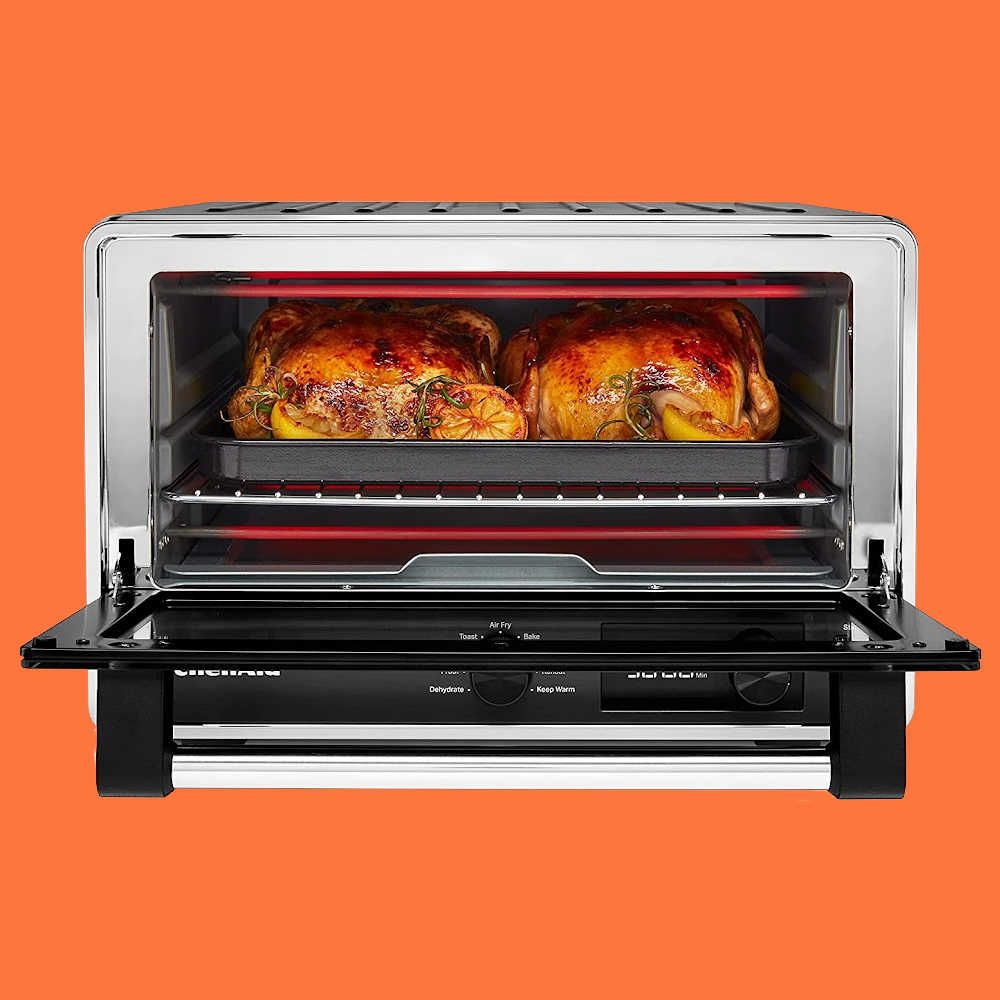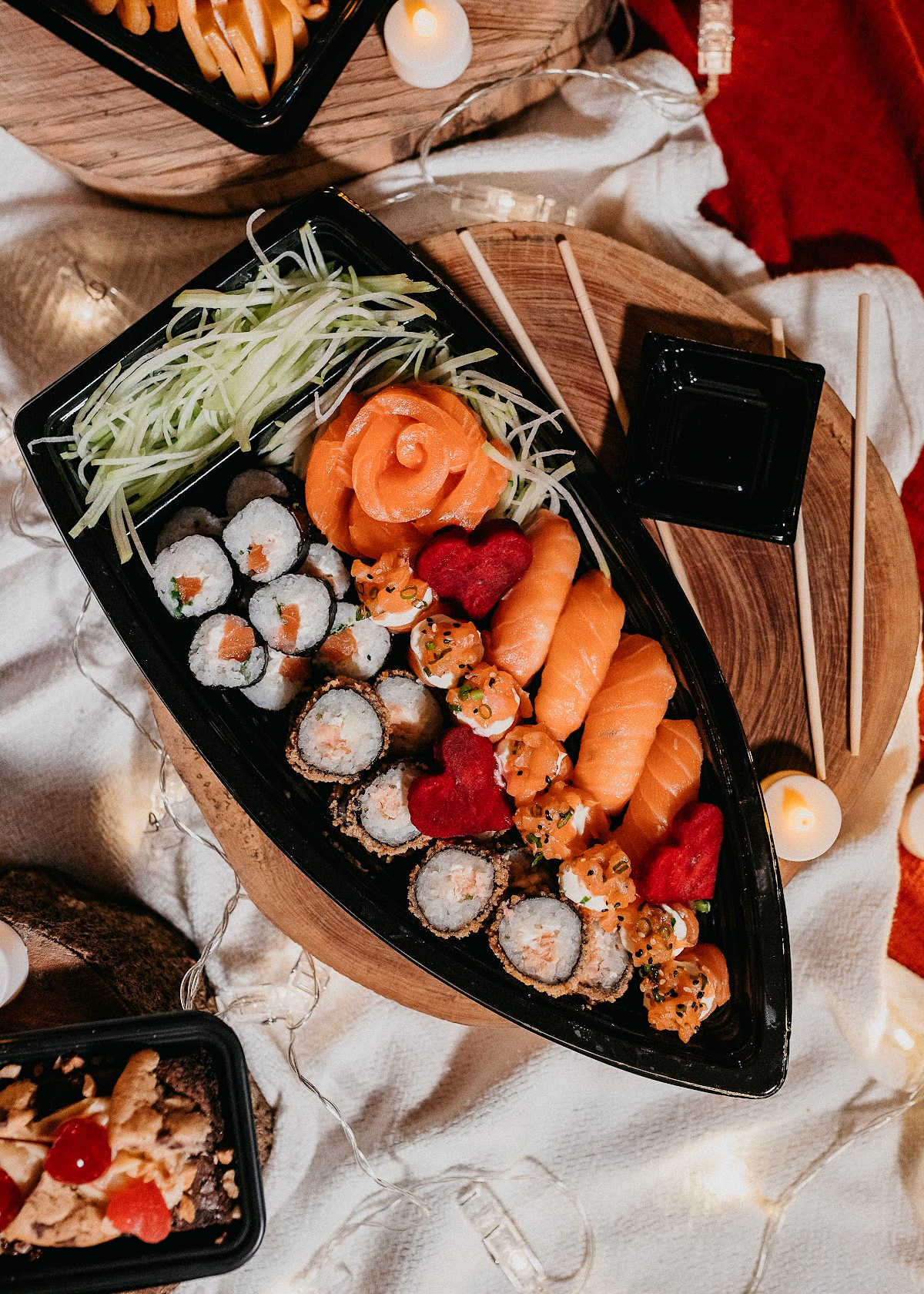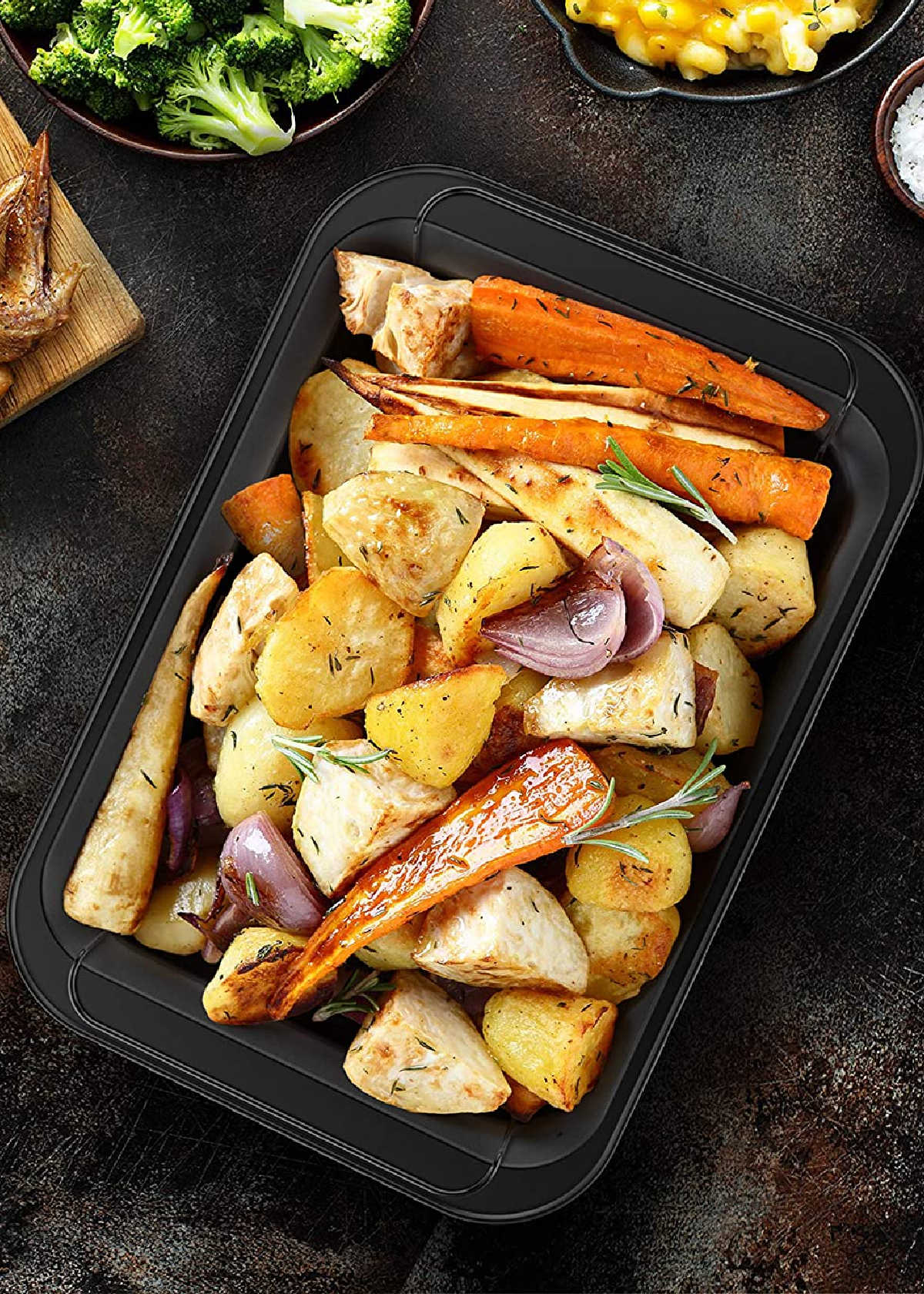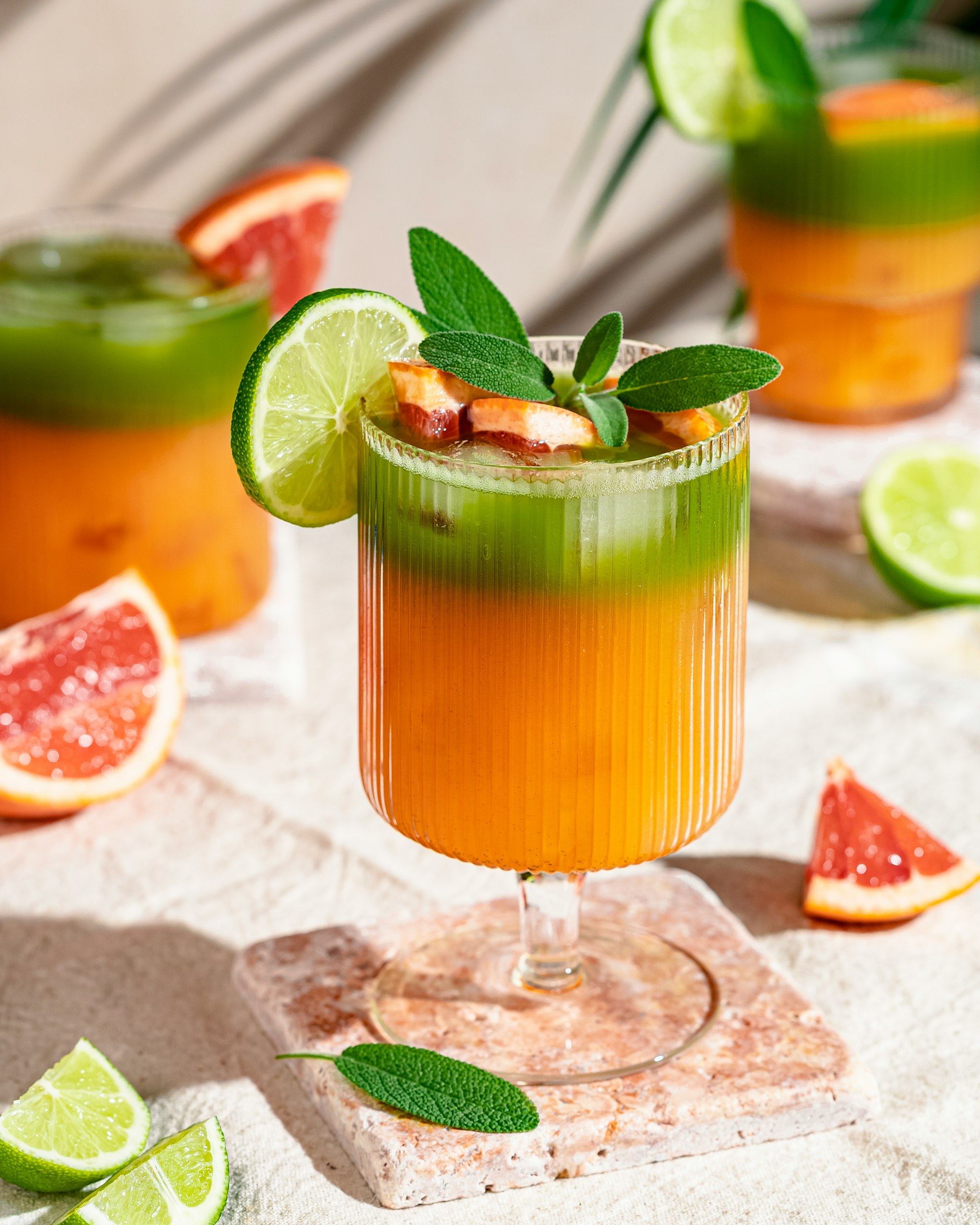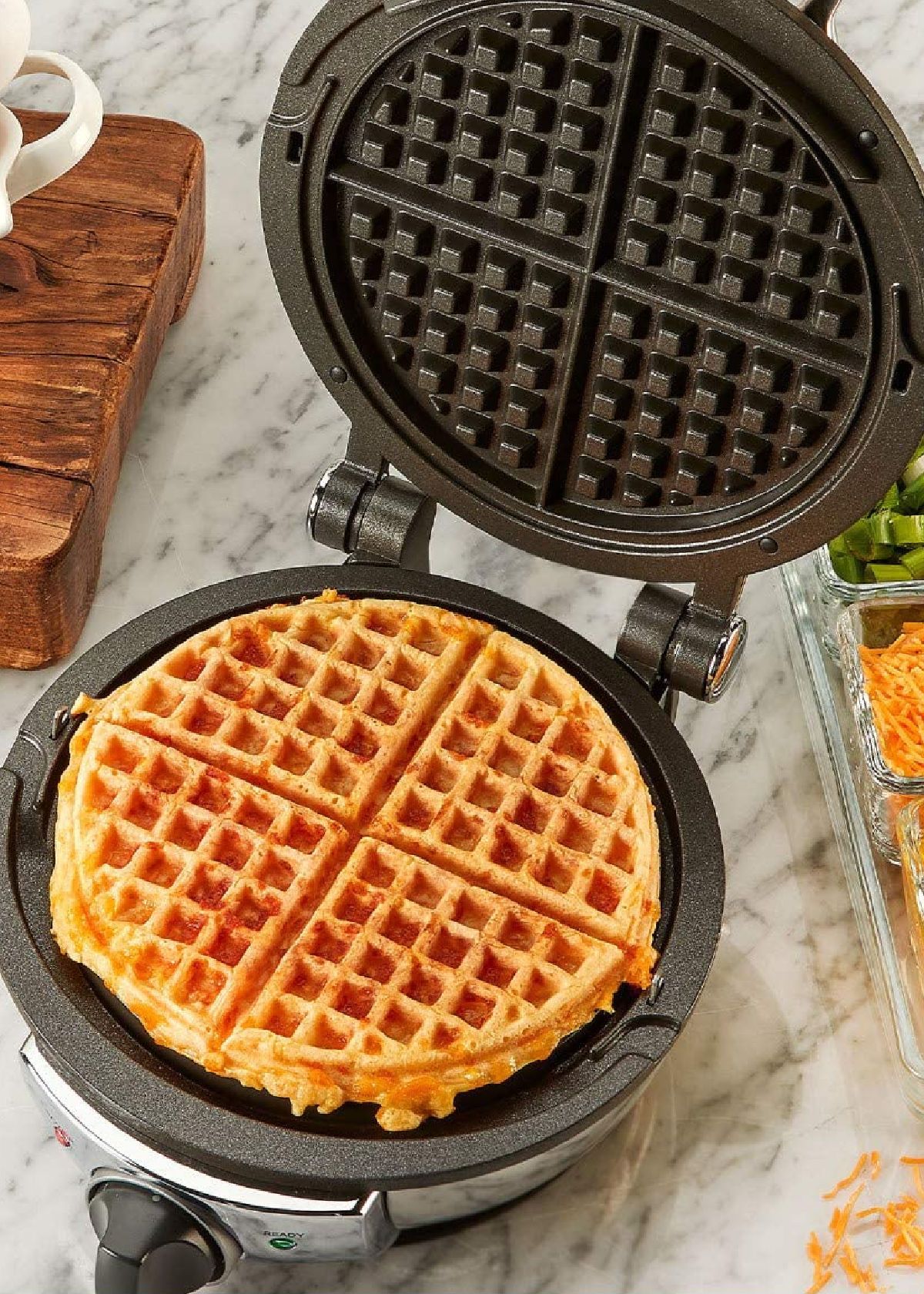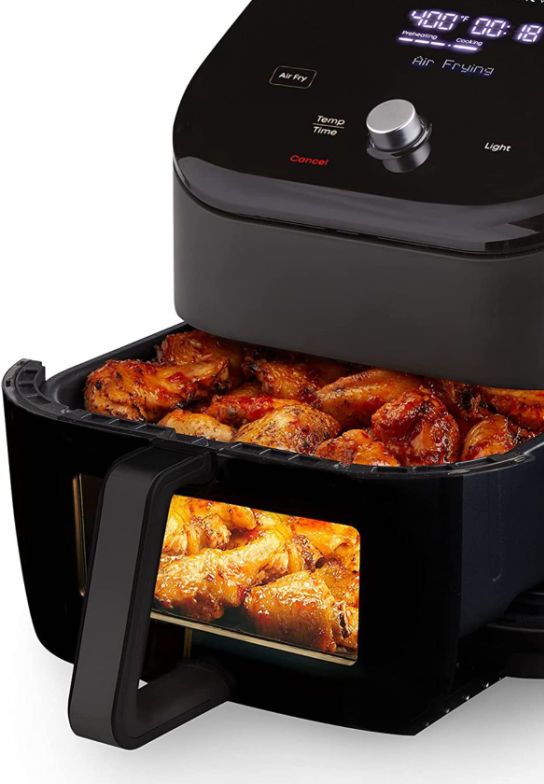Content Summary
Immersion blenders are perfect for any home cook. Hand blenders are lightweight, easy to use, versatile, and perfect for making everything from soup to smoothies, salad dressing, homemade mayonnaise, or sauces.
In this guide, we’ve put together this beginner’s guide to help you get the most out of this amazing kitchen tool and food processor: your immersion blender.




Making Smoothie Using A Handheld Blender
How To Use An Immersion Blender
Step 1: Read The Manual
- Before using your new immersion blender, read the manual carefully.
- Different models might have slightly different features and capabilities, so familiarize yourself with the features and capabilities of your handheld immersion, or "stick" blender.
- Once you understand the basics, you can begin.
Step 2: Choose A Container
- Choose a container or mixing bowl that is deep enough to accommodate the immersion blender.
- The container should be at least one or two inches wider than the blade guard because when it's too narrow, it could damage the blender.
- You should also choose a container with a flat bottom, so you can comfortably move the blender while reaching as much content as possible.
Step 3: Add The Ingredients
- Add the ingredients you want to blend, chop, or puree into the container.
- Make sure that the ingredients are cut into small, uniform pieces to ensure even blending resulting in a smooth consistency.
Step 4: Attach The Blender
- Attach the immersion blender shaft to the motor body and plug it into a power outlet.
- Make sure the blender shaft is firmly attached and locked in place.
Step 5: Blend
- Put the immersion blender into the container and submerge the blades.
- Blend the ingredients until the desired texture is achieved.
- Be careful not to over-blend, as this can result in a runny texture.
How to Use an Immersion Blender to Make a Creamy Soup | Peas and Hoppiness
1. How To Use An Immersion Blender For Soup
Using an immersion blender for soup is easy and convenient. It saves you time and reduces the mess involved in transferring soup from one container to another, like when you use a countertop blender. Here’s how:
Step 1: Cut The Vegetables
- Cut the vegetables into small pieces that will fit into the pot.
Step 2: Cook The Soup
- Boil them on low to medium heat until they are soft.
- Cook your soup until it starts to simmer and the ingredients are tender.
- Remove from the heat, and let the soup cool down.
Step 3: Blend The Soup
- Insert the immersion blender into the soup and blend until the desired creamy texture is achieved.
- Avoid blending for too long, as it can make the soup watery. Usually, just a few minutes or less is all it takes.
- For chunky soups, simply pulse the immersion blender for a few seconds rather than blending it completely smooth.
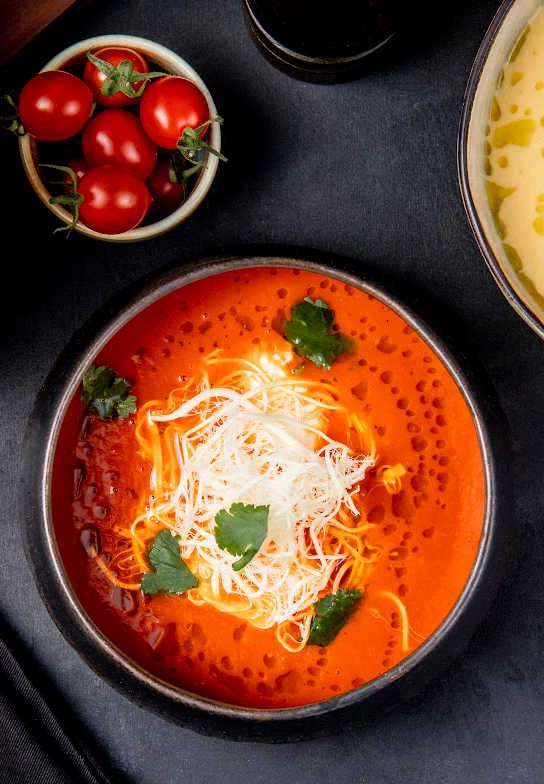
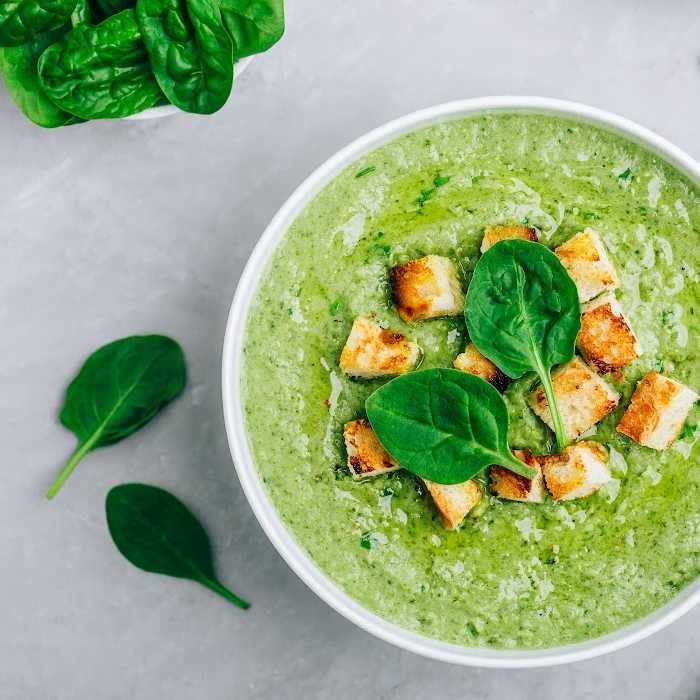
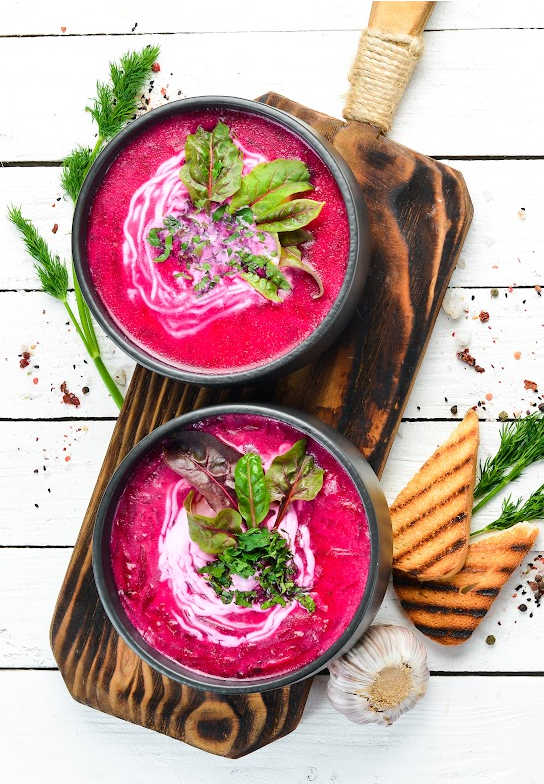
2. How To Use A Hand Blender For Chopping
Many immersion blenders come with a chopping attachment or blade guard. This makes it easy to chop vegetables, nuts, or herbs. It is perfect for making homemade salad dressings, pesto, salsa, or guacamole. Here’s how:
Step 1: Choose A Container
- Choose a container or bowl for chopping.
- Make sure it is the right size for the blades.
Step 2: Add The Ingredients
- Cut the produce into small pieces.
- Add the ingredients you want to chop into the container, tall enough to accommodate the stick blender.
Step 3: Attach The Blender
- Attach the chopping blade guard to the immersion blender shaft.
Step 4: Chop
- Put the immersion blender into the container.
- Pulse it a few times for a chopped texture or until the ingredients are coarsely chopped.
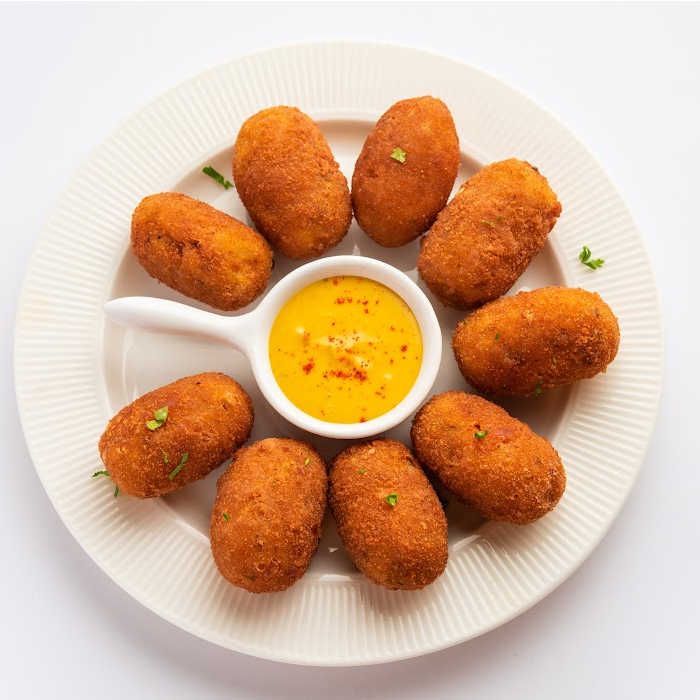




Making Salad Dressing Using A Handheld Blender
3. How To Use A Hand Blender For Juice
Using an immersion blender to make juice is easy and mess-free. It’s perfect for making healthy, nutritious drinks. Here’s how:
Step 1: Choose a Container
- Choose a tall container for making the juice.
- If you want to use a glass container or pitcher, make sure its glass is thick and heavy.
- It should be the right size for the immersion blender.
Step 2: Add Ingredients
- Add the ingredients you want to include in the juice.
- They should be roughly chopped into small pieces.
Step 3: Attach The Blender
- Attach the blender to the motor body and plug it into a power outlet.
- Insert the immersion blender into the container.
Step 3: Blend
- Pulse it a few times. Blend until the juice is smooth and creamy.
- Pour it through a sieve to take out the seeds and pulp.
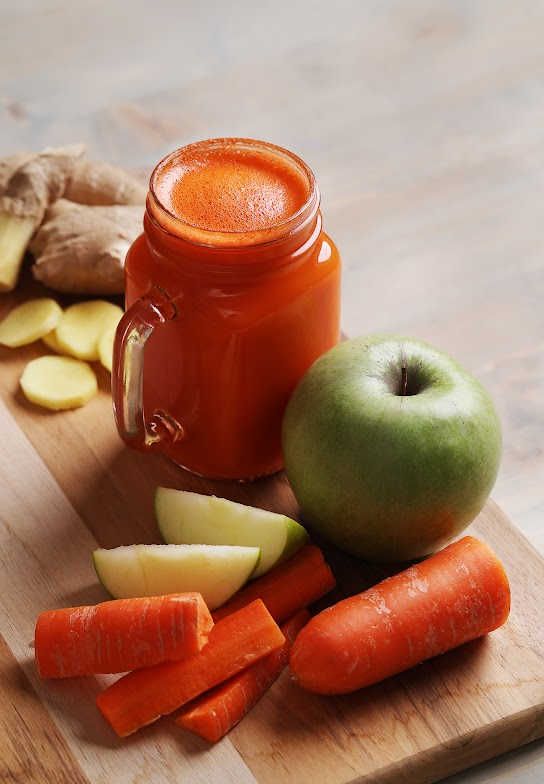
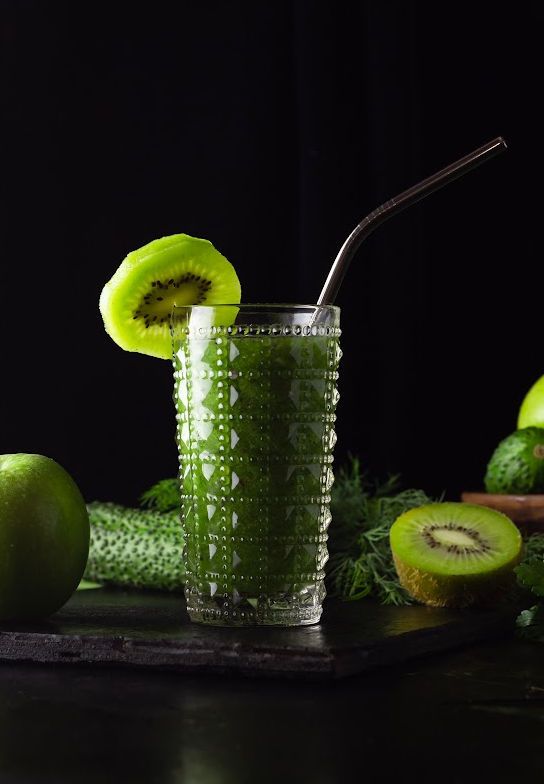
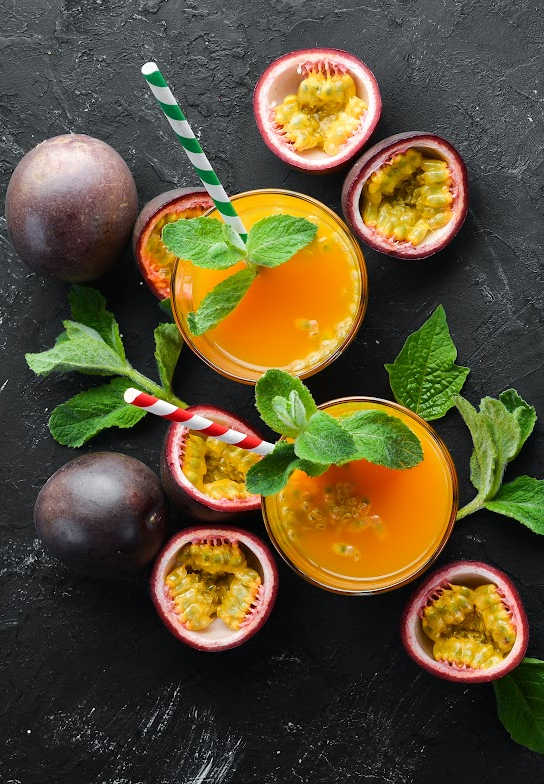




Making Kiwi Apple Smoothie Using An Immersion Blender
Using An Immersion Blender FAQs
Here are some of the frequently asked questions about using an immersion blender.
What kind of container should I use for blending?
The best container to use is one that is slightly wider than the blender's blade guard and deep enough for it to fit. This will ensure your safety and the optimal performance of your immersion blender.
How do you use an immersion blender without splattering?
If you’re using an immersion blender and find that it splatters, there are a few steps you can take to prevent this from happening.
- Make sure the ingredients you’re blending are cut into small, uniform pieces to help with even blending.
- You can also try using a container with a flat bottom which will help the blender sit comfortably and not move around.
- Make sure to submerge the blades of the blender in the ingredients before blending and pulse instead of running it continuously. This will help to reduce splattering.
- Additionally, you can use a splatter guard to help contain any mess. This is especially useful if you’re blending hot ingredients as it helps keep the heat contained while blending.
Do you have to let the soup cool before using an immersion blender?
It’s important to let the soup cool before using an immersion blender. If you try to blend hot soup, the steam can cause the blades to spin and splatter, making a mess.
You should also wait for 15-20 minutes to cool because blending hot ingredients can lead to over-blending, which can make the soup watery and runny.
Can an immersion blender blend hot soup?
If you want a creamy soup, don't blend soup when it's hot. Blending hot ingredients can lead to over-blending, which can make the soup watery and runny. Additionally, the steam from the hot ingredients can cause the blades to spin and splatter, making a mess.
So it’s best to let the soup cool for 15-20 minutes before blending. If you want to use an immersion blender to blend hot ingredients anyway, you can use a splatter guard to contain the heat and help reduce splattering.
But remember, in the kitchen, time is of the essence, and sometimes patience is needed to allow the hot turn to warm.
Can I use an immersion blender to make mashed potatoes?
You can use an immersion blender to make mashed potatoes.
Start by boiling the potatoes until they are fork-tender, then drain them. Add butter, sour cream, and milk to the potatoes and blend with your immersion blender until they reach your desired texture.
You can also add seasonings like garlic powder, salt, and pepper to taste. Be careful not to over-blend, as this can make the potatoes runny.
Can I make whipped cream with my immersion blender?
Yes, but only if your blender has a whisk attachment. If not, you'll need a hand mixer with whisks, or whip the cream by hand, using a whisk.
Can I scramble eggs with an immersion blender?
It is not recommended to make scrambled eggs with a stick blender. You better scramble the eggs in a bowl, using a whisk.
What are the disadvantages of an immersion blender?
Despite being an incredibly versatile kitchen appliance, there are some disadvantages to using an immersion blender.
- Lack of power compared to a regular countertop blender. This means that it is not suitable for making very thick or hard ingredients like nut butter, as well as large batches of food.
- An immersion blender is less durable than a countertop or regular blender. The motor can easily overheat if used for too long.
- The blades can also be difficult to clean. They are often narrow and hard to reach. You have to clean them right after use, with hot water, dish soap, and a small washing brush.
Will immersion blender scratch pots?
An immersion blender can scratch pots if it is not used correctly.
- To avoid this, make sure you use the correct container size and that you do not press the blender down too hard.
- It is also important to make sure the blades are submerged in the ingredients before blending.
- Additionally, use a splatter guard to help contain any mess.
- Keep the distance between the blade and the pot as small as possible when blending. This will help reduce any potential scratching of the pot.
Should an immersion blender touch the bottom of the pan?
An immersion blender should not touch the bottom of the pan when blending. The blades should be submerged in the ingredients and kept a few inches above the bottom of the pan. This helps reduce any splattering and increase blending efficiency.
Tips & Tricks
Do's
- Read and follow the manufacturer's instructions.
- Always ensure that the parts are well attached and locked in place.
- Use a container that is the right size for the blender.
- Before blending, make sure the ingredients are cut into evenly sized-pieces.
- Blend firm, but gentle. Don't over-blend.
- Always unplug your immersion blender before cleaning it.
- Clean the blades right after you finish blending.
Don'ts
- Don’t submerge the motor body of the immersion blender in water or any other liquid.
- Use the immersion blender for crushing ice or frozen fruit.
- Don’t press down too hard on the blender while blending.
- Don’t use the immersion blender for too long, as this could damage it.
How to Use an Immersion Blender: Additional Tips & Tricks | Peas and Hoppiness
Need a quality handheld blender? Find the best immersion blender? Check out the blog post below for reviews of the top rated immersion blenders we have selected for you!
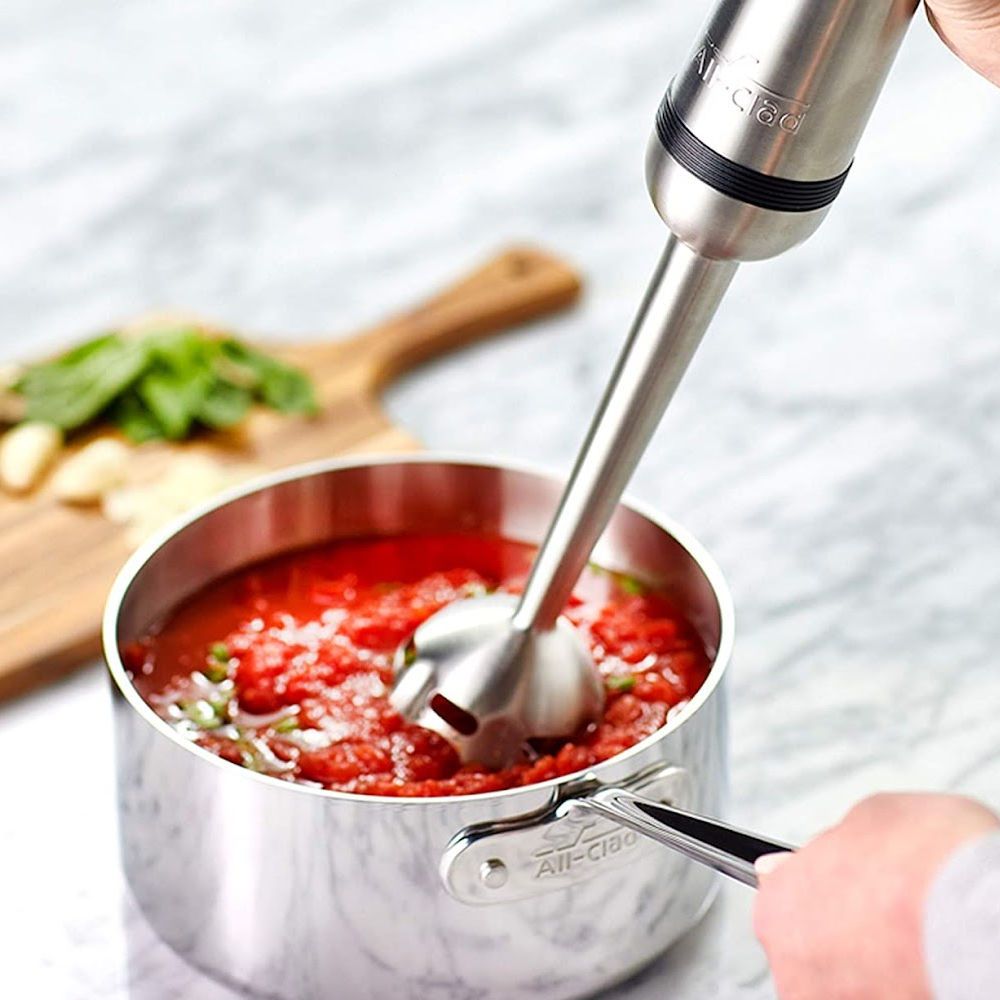
With this guide, you should be able to use your immersion blender with confidence. Experiment with different recipes and uses to get the most out of your immersion blender. Happy blending!
Catchy Finds




